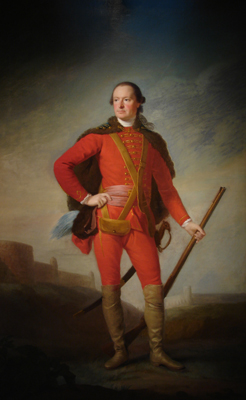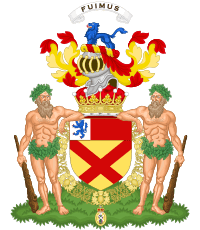Charles Bruce, 5th Earl of Elgin facts for kids
Quick facts for kids
The Earl of Elgin and Kincardine
|
|
|---|---|
 |
|
| Born | Charles Bruce 6 July 1732 |
| Died | 14 May 1771 (aged 38) |
| Buried | Dunfermline Abbey, Fife, Scotland |
| Spouse(s) | |
| Issue |
|
| Father | William Bruce, 8th Earl of Kincardine |
| Mother | Janet Roberton |
Charles Bruce, also known as the 5th Earl of Elgin and 9th Earl of Kincardine, was an important Scottish noble. He was born on July 6, 1732, and passed away on May 14, 1771. He is remembered for his family, his role in Scottish Freemasonry, and for creating a new village.
Contents
Who Was Charles Bruce?
Charles Bruce was the son of William Bruce, 8th Earl of Kincardine. His mother was Janet Roberton. Her father, James Roberton, was a very important judge.
His Family Life
On June 1, 1759, Charles Bruce married Martha Whyte. She was born in 1739 and lived until 1810. Martha later became a governess, which means she taught and cared for a young royal, Princess Charlotte of Wales.
Charles and Martha had eight children together:
- Lady Martha Bruce (born 1760), who died young.
- Lady Janet Bruce (born 1761), who also died young.
- William Robert Bruce, Lord Bruce (born 1763), who died young.
- William Bruce, 6th Earl of Elgin (1764–1771).
- Thomas Bruce, 7th Earl of Elgin (1766–1841).
- Charles Andrew Bruce (1768–1810), who became the Governor of Prince of Wales's Island.
- James Bruce (1769–1798), who was a Member of Parliament.
- Lady Charlotte Matilda Bruce (1771–1816), who married Admiral Philip Charles Durham.
Important Roles and Projects
Charles Bruce was involved in several important activities during his life.
Grand Master of Freemasons
From 1761 to 1763, he held the title of Grand Master of Scottish Freemasons. This is a very high leadership position within the Freemasonry organization in Scotland.
Founding a Golf Club
He was also one of the people who helped start the Royal and Ancient Golf Club of St Andrews. This golf club is one of the oldest and most famous in the world.
Building a Village
Charles Bruce was also known for building a new village called Charlestown, Fife. This was a planned industrial village, meaning it was designed to help with local industries.
Where He Was Buried
Charles Bruce was buried in the southern part of Dunfermline Abbey. His grave is close to the burial place of the famous Scottish king, Robert the Bruce.
In 1812, a Scottish composer named Magdalene Stirling created a piece of music called the Charles Bruce Reel, named after him.
Images for kids



